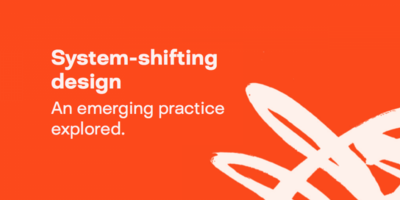Croft Filters Ltd

A successful product development and rebranding project took this leading filter manufacturer to the next level.
Challenge
Croft Filters Ltd, based in Warrington, Cheshire, is a leading UK manufacturer of customer-specified filters for a range of uses. Founded by brothers Neil and Mark Burns as Croft Engineering Services in 1986, in 2014 it had reached a staff of 25 and turned over £1.87m.
Today, its international customer base straddles the chemical, oil, gas, power generation, pharmaceutical, food and drinks industries.
In 2011, Croft Filters Ltd had an idea for a new product - an ‘eco-filter’ that would reduce pressure drop, thereby cutting power consumption. They built a plastic prototype but had no idea how best to make the product in metal.
This prompted their approach to Design Council. As Neil Burns said: “We hoped that working with [Design Council] would help us take our business to a different level.”
What we did
Design Council assigned Gavin Pryke, an experienced Design Associate, to work with Croft’s management team. Led by Pryke, they together took an in-depth look at the business and its market and soon identified a number of opportunities for improvement.
It was clear that although the business was growing, the quality of its branding and the design of its website had not kept pace. The business value that could be gained from a design-led approach was clear and potential opportunities were identified and prioritised.
The company had already spent heavily on its website, an investment regarded as having paid off well, as it successfully portrayed the business as bigger than it actually was. Even so, it was agreed an additional upgrade could raise Croft’s game further still and open opportunities to new markets to attract more customers.
The hope was that reinvigorating the overall look and feel of the company would enable it to better meet the challenges posed by competition, cheap imports and fluctuating economic conditions. Pryke explained: “If the business could get its branding right, then it stood a better chance of maintaining margins, creating quality sales leads and increasing market share.”
Croft’s directors agreed to fund two projects – one to assess the design and manufacturability of the new eco-filter, the other to review and update the business’s branding. With Pryke’s help, the projects were shaped and detailed design briefs prepared.
Pryke then pulled together a list of potential agencies to pitch for delivery of the projects and ran two pitch sessions with the company. Two design agencies were appointed: design and product development agency C-Tech to work on the fluid dynamics of the eco-filter and branding specialist The Chase to do the rebranding. Pryke remained in close contact with both the directors and designers throughout each stage to provide best practice guidance as work progressed on delivering both projects up to final implementation.
C-Tech’s investigation showed that more work was needed for the Croft eco-filter design’s performance to be better than that of a standard filter. The team identified design alternatives that could potentially improve its efficiency. Two of these were found to have advantages and are being prototyped with Lancaster University.
The business is very entrepreneurial... But its existing brand identity represented anything but.
Richard Scholey, Creative Director, The Chase
The Chase’s brief was to define and articulate an authentic brand proposition then create a cohesive new brand, a revised website and new marketing collateral.
“The business is very entrepreneurial, incredibly passionate about its area of expertise and delivers a quality of product and service rarely matched in its sector,” Richard Scholey, The Chase’s Creative Director, observed. “But its existing brand identity represented anything but.”
The directors agreed to change the company’s name from Croft Engineering Services to Croft Filters to emphasise its specialism.
The Chase then developed new branding: a design utilising the holes that make up filters with an industrial-themed colour palette and fonts. It also created new materials to fill gaps in the company’s previous portfolio of marketing materials – including product cards, post cards and product labels.
© Image Copyright:
Croft Filters Ltd
<figcaption class="asset-details">
Some of the newly branded materials created by The Chase.
</figcaption>
Croft Engineering Services officially rebranded as Croft Filters Limited in January 2013. The new branding brought the business a clearer, crisper, more defined image that neatly articulates what it does: manufacture specialist filters and offer development services to customers.
Results
Looking back, I’d say we were doing OK … but the support we had from Design Council has made us do better.
Neil Burns, Managing Director, Croft Filters Ltd
In the two years since rebranding, Croft Filters’ sales have increased 20 per cent year-on-year, with monthly sales peaking at an all-time high of £250k in July 2014. In comparison, turnover grew by just 2.7 per cent between 2004 and 2009.
Burns is in no doubt the two design projects helped take the business to another level: “We’ve always invested in marketing, but what we came to realise working with The Chase is that we hadn’t been brand conscious – and there’s a big difference between the two,” he said.
Work on developing the new eco-filter is ongoing, although a number of design elements identified during the development process have already been integrated into other products.
“Gavin’s help in briefing and selecting the agencies we worked with was critical as we’d have no experience in doing either before,” Burns noted. “We ended up spending more than had expected, but this was because he pointed us in the right direction – to get the best result, rather than simply do it on the cheap.”
He added: “Looking back, I’d say we were doing OK … but the support we had from Design Council has made us do much better.”
Subscribe to our newsletter
Want to keep up with the latest from the Design Council?

